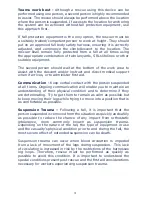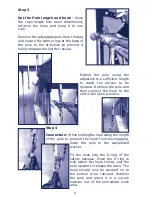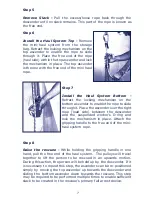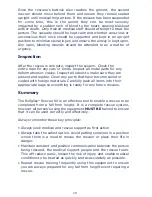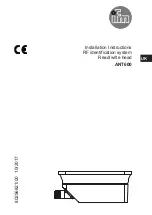
At this time, the decision on whether to raise or lower the person
being rescued needs to be made. There are many factors to reaching
this decision such as:
•
Obstacles below the person
•
Level/nature of injury
•
Location of medical assistance
•
Time of suspension
In most cases, it will be easiest, quickest and safest to lower the person;
however this can only be determined in the specific circumstances
faced during the event.
Step 9
Secondary system in place -
DBI‑SALA always promotes the use of
both a primary and secondary system of protection while working at
height. This also applies to person being rescued. If the person being
rescued is retained in position by a self‑retracting lifeline (SRL), then
if there is sufficient length in the lifeline, the motion of raising them
should unlock the device and allow them to be lowered to the ground
with both the rescue device and SRL in place to protect the person
from further fall.
If the person has been retained by a deployed shock absorbing
lanyard, the raising motion will allow their lanyard to be unhooked
from the anchorage and to be lowered, however this will not enable
a secondary device to remain in place. Once again, there may be
insufficient time to attach a secondary device, however this underlines
the importance of ensuring the person is properly retained prior to
removing their lanyard.
Either way, prior to the descent, the mini‑haul system pulleys must
be removed from the rope. Loosen the locking mechanisms of
the ascenders by sliding them on the haul rope, then unlock the
mechanisms and remove the ascenders from the rope
Step 10
Lower the person being rescued to safety –
Prior to lowering the
rescuee take the free end of the rescue rope and loop it through a
second carabiner (not provided in kit) attached to the anchor strap.
The rescuer will maintain a grip on the free end during the descent




